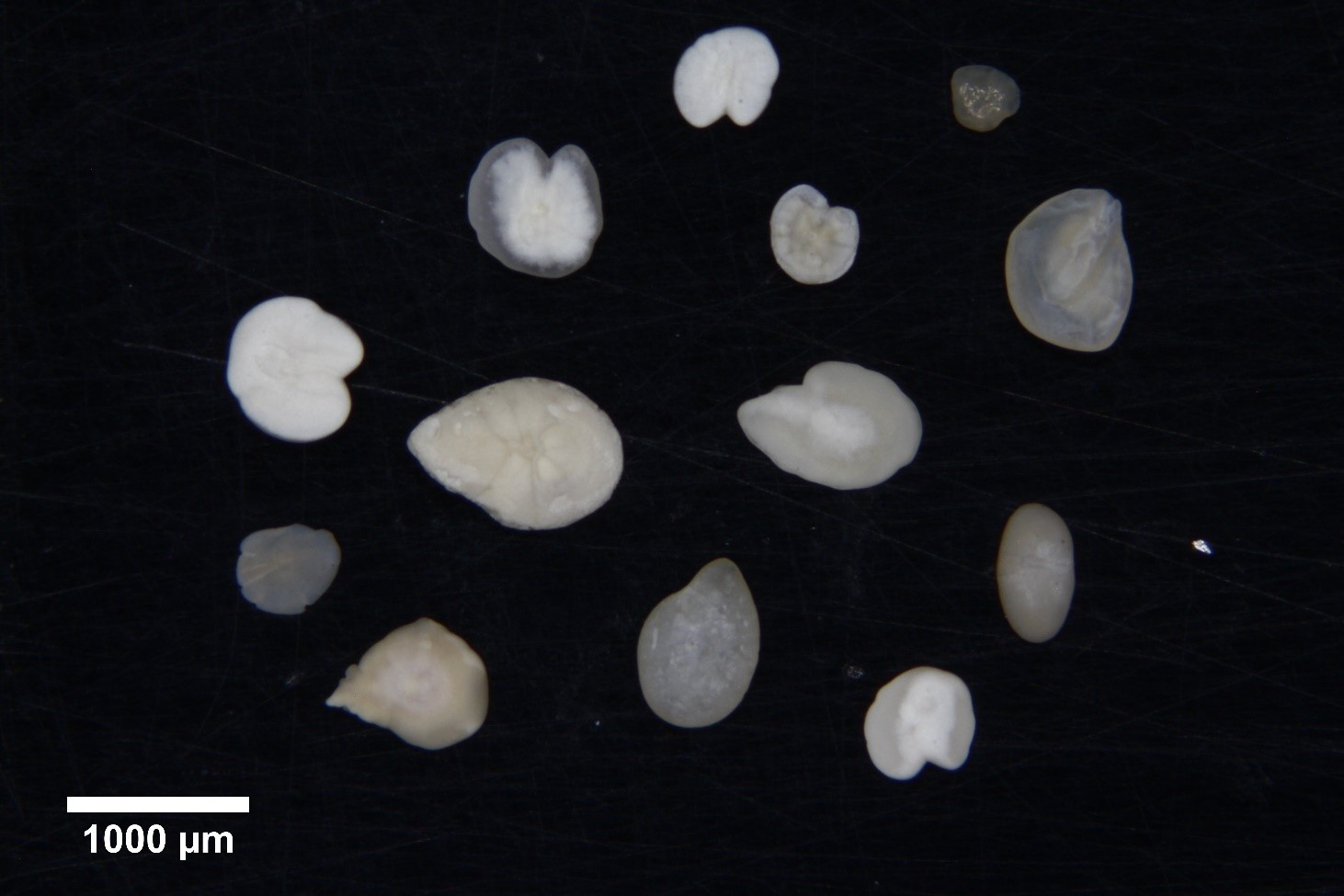Catching fish in time
By Joaquín De Entrambasaguas Laguna:
Climate variability is one of the main factors driving changes in fish populations (together with human-related impacts). The abundance of such populations varies with a cadence of several decades, however, according to FAO´s Fisheries and Aquaculture department, during the last 30 years an overall decrease in marine fish catches around the globe has been observed. Taking fish catches as a good proxy for fish abundance, we can interpret that fish stocks have been decreasing, at least, during the last 30 years. Furthermore, the lack of reliable information before the 1980s, when fish populations and their fluctuations started to be researched, makes it hard to distinguish whether this tendency falls under natural variability or is ruled anthropogenic impact.

Otoliths observed by Stereoscopic Microscopy: Otoliths are the key to understanding variability of fish abundance through time (Photo: S. Pallacks)
My Final Master´s Thesis aims to contrast is if the decrease of fish abundance that we are observing nowadays was already happening in the Eastern Mediterranean during the last 5000 years. To do so, I´m looking into the otolith fossil record from a marine sediment core that covers this time span. Otoliths are structures made from calcium carbonate and proteins present in the inner ear of bony fishes, where they serve hearing and sensing purposes. From all the parts of the fish skeleton, otoliths are, together with teeth, the most likely to fossilize, which makes them extremely common in marine sediments and very good indicators for fish abundance. By looking sequentially into the otolith content of precisely dated marine sediment, we can reconstruct how fish abundance varied through a certain period.

Global capture production on marine fishes over the last 70 years (FAO)
To obtain otolith material from marine sediment, the latter should undergo a wet sieving process. This procedure consists in forcing the marine sediment through different sieves with the help of water pressure, with the sieves mounted one on top of one another and successively smaller in mesh size. I used a sieve with a mesh size of 125 µm for the coarse fraction and 32 µm for the fine fraction. As isotopic measurements are expected to be performed on the otoliths recovered from the coarse fraction, I used deionized (DI) water for sieving on the top sieve and tap water on the bottom (ions present in tap water may alter the results). By the time sample sieving is done, the clays that comprise most of the sediment are disintegrated and washed through the sink. The residue (which includes the otoliths) is separated by grain size.
Based on my personal experience, sieving is a harder task than it may seem. You should be very persistent, as, per sample, it will take a mean time of 1 ½ hr. to separate the clay from the rest of the material. Also, you must be very careful not to lose any material during the process, which can be a challenge when the sieves get clogged. Afterwards comes the picking procedure, on which we must select the otoliths from the rest of the same-size material. We do so with the help of a stereoscopic microscope that allows us to clearly distinguish the material despite their small size. From all the new techniques and procedures I am having to put into practice during my Master Thesis development, picking is my personal favorite. The reason for this is how relaxing picking feels to me. I just get my headphones on, put some jazz music (Find my favorite tracks for picking attached by the end of this post) and submerge into an iridescent universe where sponge spicules, foraminifera, and the tiniest of bivalve shells swarm around.
Working with MERS in my Final Master´s Thesis is being a greatly enjoyable challenge. Considering I have a mostly paleontological background, all the bibliographical approach has been quite new for me, however, I am currently learning about climatic proxies and events in a much deeper way than I have ever had. Also, fishes are a greatly overlooked group in paleontology (you mostly learn about their great Devonian radiation and little more), so getting to grasp deeper knowledge on their recent paleobiogeography has awakened my curiosity towards this resilient and antique clade. Finally, this opportunity it is giving me a much deeper and broad understanding of how climate and climate changes work, which is very exciting for me, as contributing to the climate change problem is one of my main focuses right now.
Classy jazz echoes at the Opal palace– A picking playlists for ocean scientists and paleoclimatologists
- Bésame mucho (French Version)-Avalon Jazz Band
- Beyond the Sea (La Mer)-Django Reinhardt
- Bonjour sourire (Henri Salvador)-Avalon Jazz Band
- Boum!-Charles Trenet
- La vie en rose-Edith Piaf
- Si tu vois ma mére-Sidney Bechet
- Moonlight serenade – Glenn Miller and his orchestra
- Night and day – Benny Goodman and his orchestra
- Never let me go (Florence and The Machine) piano cover- The Theorist
- Pure imagination (Jazz Piano Cover)-Scott Bradlee



